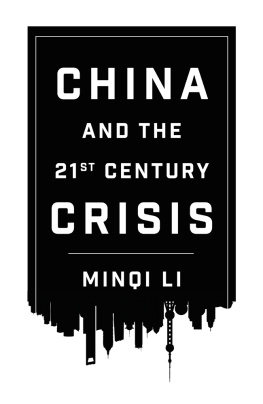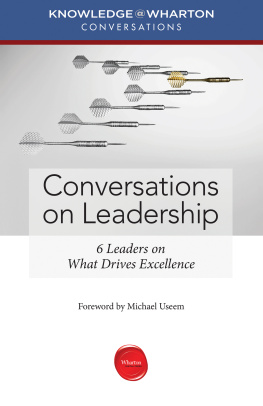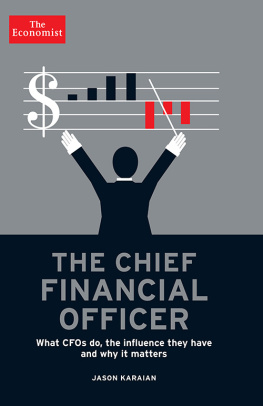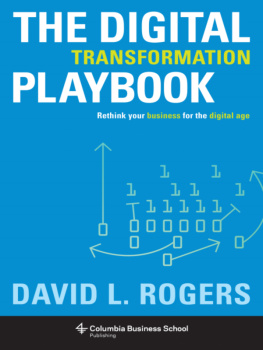Introduction
Ginni Rometty has a Twitter account (@GinniRometty), allowing people to message her, but she has yet to post. Thats right: The CEO of IBM, the global technology and consulting firm, doesnt tweet, and her presence is minimal in other public social venues such as LinkedIn, Facebook, and Instagram. Does this mean that Americas most powerful female CEO doesnt make the grade as an engaged leader? Hardly. Shes actually a model leader for a new era.
Its obvious from the partnership IBM formed with Twitter in October 2014 that Rometty grasps fully the potential business value of social data. Rometty doesnt tweet simply because its not a part of her larger plan. She maintains a laserlike focus on her larger goals, recognizing that theres a big difference between a strategic embrace of the new digital world and superficial symbolism.
Ginni Rometty is exactly the type of digital trailblazer we will examine throughout this book. She understands the power of digital, social, and mobile tools for IBM, and she uses them strategically. For instance, she has overseen the development of what IBM calls a system of engagementincluding arguably the most liberal social business policy in the corporate world. More fundamentally, she has undertaken a far-reaching transformation of IBM aimed at the historic convergence of big data, cloud computing, mobile, and socialincluding tens of billions of dollars of both investments and divestituresto shape IBM for a new era.
As far as her own digital activity is concerned, she is focused on those direct forms of engagement where her personal agency can have the greatest impact. Shes on the This combination of proactive outreach and reactive shaping allows Rometty to further her overall strategy and adjust it in real time.
Rometty and other leaders like her know the value of social and digital tools, and they use them wisely. They dont chase every bright shiny app or platform that comes along. They are successful because they take a thoughtful approach to utilizing the multitude of tools, digital and otherwise, that come and go. They use them in a focused way to listen to employees, share ideas, and engage their workforce more effectively.
Leadership has always been about the exercise of power and influence to achieve a strategic endwhether the goal is to conquer a city, launch a new product, or provide for the homeless. But what draws each of us to act on behalf of leaders is more nuanced than that. We follow people who are credible, who inspire us, and whom we trust. The relationship between leaders and followers is as fragile and complex as ever in the digital age, but something has changed of late. Technology has profoundly altered not only how we develop and nurture these relationships, but also how leadership is practiced.
In order to be truly effective today, leaders in business and society must change how they engage, and in particular how they establish and maintain relationships with their followers via digital channels. While looking someone in the eye and shaking hands with customers and employees will never lose their value, they are no longer enough to sustain relationships in a fast-moving digital world. The metamorphosis required to become what I am calling an engaged leader is not easy or painless. The openness required is unprecedented, and the trust and transparency are mind numbing for many top leaders who are accustomed to maintaining control and proceeding in an orderly and predictable fashion.
I define an engaged leader as someone who uses digital, mobile, and social tools strategically to achieve established goals as they relate to leading people and managing organizations. As basic as that sounds, putting digital skills into practice is tricky and uncomfortable. Heres what I tell leaders: If your palms arent sweaty and your stomach isnt churning, then you probably arent practicing engaged leadership.
Backing OffIts Not an Option
Not everyone is comfortable stepping out from behind the safety glass of a command-and-control-style engagement in order to mingle with employees and customers in open digital venues. After all, many of todays leaders rose through the ranks by following established rules, pursuing a more traditional definition of success. The shift is disorienting and causes many leaders to shut down and disengage. Its one thing to opt out from specific channels because they are not a part of your personal plan, as Rometty has, but quite another to use inaction as your permanent default. Its as if your cell phone keeps ringing and you wont pick up.
I get itthe challenges for leaders today are daunting.
First, power and influence have decoupled from title and pay grade, and many people are at a loss as to how to proceed. The hierarchies developed at the dawn of the industrial age, and which are still common today, were done so to create efficiency and scale. They work well if you manufacture widgets, where the information and expertise needed to make decisions reside only at the top. But in our modern, digitally connected world, the need for efficiency pales compared with the need for speed, innovation, and change. The people who have to respond quickly to change live at the edges and bottom of the organization. Organizational leaders today need to trust that their employees will exercise good judgment when making decisions that in the past would have been sent up the ladder for someone else to make.
Next, traditional middle managers are fighting the change. Because they sit in between top leaders and the front lines, they abhor the new openness. They see top executives going around them to talk to their direct reports. They feel they are losing control, so many fight these changes tooth and nail. While these managers often present an obstacle to change, they are also a crucial part of the solution. The key for leaders is to help their lieutenants across the organization realize the fallacy of control and show them how they can be successful leaders in a networked organization.
Finally, there is a lack of ownership among leaders struggling to see the upside of the digital landscape. John F. Kennedy saw the potential in the 1960s when he was the first to use television to win over the electorate. Barack Obama, likewise, stepped up to use social networking to secure the White House and then used digital data to stay there. So why are so many CEOs and business leaders still trying to figure it out and find the upside? Because many still believe its someone elses job. They dont think they have the skills or expertise to tap into digital and social tools. So they back off.














